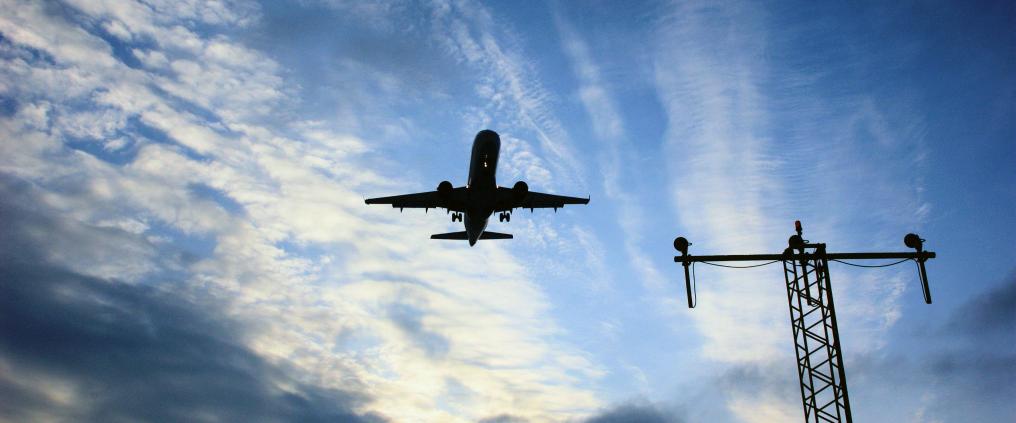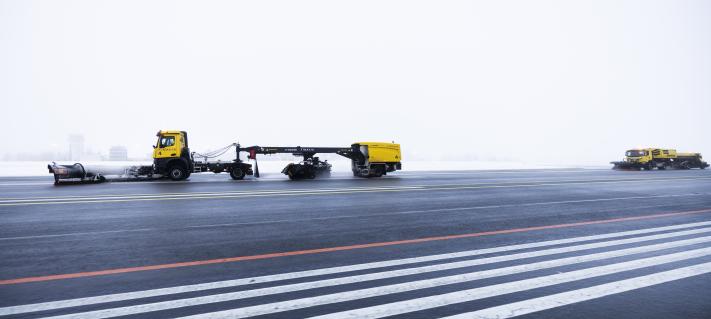Flying enables people to travel far quickly and safely. Many, however, are increasingly worried about the effect flying has on the environment, especially regarding climate change. Recently, Sweden announced that it would take into use an aviation tax, which will impose added emissions fees on airlines flying to or from Sweden. Sweden’s decision brought the topic under discussion in Finland as well.
Is a national tax the right way to affect change in the international aviation industry? What is aviation already doing to cut down emissions? And what role does the airport play?
Mikko Viinikainen, Vice President, Sustainability & Environment, answers questions about aviation emissions.
What is Finavia’s take on the aviation tax discussion?
“Controlling emissions is an absolute requirement for the aviation industry to continue enabling people to also fly in the future. That’s why the industry takes its responsibility seriously,” says Viinikainen.
“An aviation tax will not channel funds towards climate work, unlike real action such as investing in emissions reductions. For example, the international aviation industry has reached a global climate agreement, CORSIA (Carbon Offsetting and Reduction Scheme for International Aviation), which unfortunately has been rather overlooked in Finnish media.”
“Signed by over 100 countries in 2016, CORSIA’s signees agreed to freeze carbon emissions from international aviation at 2020 levels. In practice, airlines will compensate all carbon emissions exceeding 2020 levels by investing in emissions-reducing projects in other industries. The long-term goal is to halve carbon emissions by 2050. In the EU, air traffic has been a part of the intra-Union emissions trade for years already.”
“Overall, discussions about a national aviation tax completely forget the international nature of aviation. The industry has worked hard to create comprehensive global solutions to control emissions.
National aviation taxes will only complicate things. The rules should be the same all over the world, so the competition doesn’t get distorted,” says Viinikainen.
What is the international aviation industry doing to cut down emissions?
“Emissions have been reduced already with, for instance, energy efficiency and new technology. This work is being done on several fronts: by airports, airlines, aircraft producers and their suppliers as well as ground handling companies.
For example, aircraft fuel efficiency has improved by 20% in each aircraft generation. Nowadays an airplane will only consume about three litres of fuel per seat per 100 kilometres, two litres on a long-haul flight. So, flying is actually a rather environmentally efficient way to travel, when going far,” Viinikainen says.
What is the role of airports in controlling emissions?
“Airports have been in the forefront of carbon neutrality work. Finavia, for instance, continuously reduces emissions in its airports and uses renewable fuels, such as waste-based diesel and wind electricity – and even produces its own solar power. The remaining emissions are compensated through wind and solar power projects in India. Helsinki Airport became carbon neutral in 2017, with Lapland airports following suite next year and the rest of our airports in 2020.
“Airports only produce a small percentage of the emissions of the entire industry, but we wish to do our best to cut down our own share. Finavia’s emissions at the moment are about 32,000 CO2 tonnes, whereas Finland’s largest airline produces 2.9 million tonnes, and the entire international aviation over 600 million tonnes, which is about 2 to 3 per cent of human-induced carbon emissions,” Viinikainen says.
Should we avoid flying altogether?
“We should see flying in the light of the positive impacts it creates. For instance, in Finland, flying is vital to the accessibility and success of our country: our export industry and international businesses rely on good flight connectivity. Flying is not just about holiday trips to the Canary Islands, but a crucial service that supports the national economy, many industries, companies and tourism.
“By controlling emissions, international air travel can continue to have these positive impacts. As an airport operator, Finavia continues to work hard to make flying to and from Finland also possible in 100 years’ time.”



